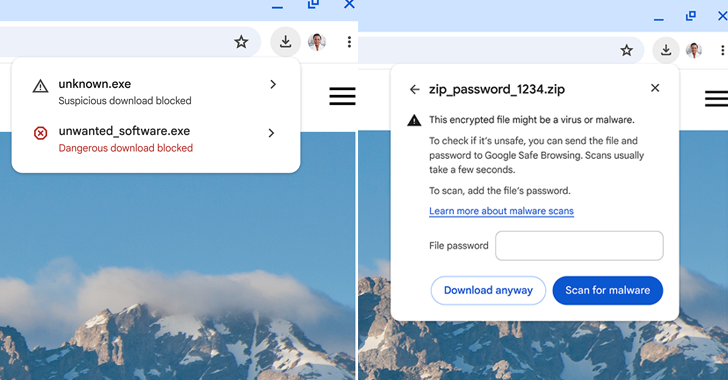Google said it’s adding new security warnings when downloading potentially suspicious and malicious files via its Chrome web browser.
“We have replaced our previous warning messages with more detailed ones that convey more nuance about the nature of the danger and can help users make more informed decisions,” Jasika Bawa, Lily Chen, and Daniel Rubery from the Chrome Security team said.
To that end, the search giant is introducing a two-tier download warning taxonomy based on verdicts provided by Google Safe Browsing: Suspicious files and Dangerous files.
Each category comes with its own iconography, color, and text to distinguish them from one another and help users make an informed choice.

Google is also adding what’s called automatic deep scans for users who have opted-in to the Enhanced Protection mode of Safe Browsing in Chrome so that they don’t have to be prompted each time to send the files to Safe Browsing for deep scanning before opening them.
In cases where such files are embedded within password-protected archives, users now have the option to “enter the file’s password and send it along with the file to Safe Browsing so that the file can be opened and a deep scan may be performed.”
Google emphasized that the files and their associated passwords are deleted a short time after the scan and that the collected data is only used for improving download protections.
“In Standard Protection mode, downloading a suspicious encrypted archive will also trigger a prompt to enter the file’s password, but in this case, both the file and the password stay on the local device and only the metadata of the archive contents are checked with Safe Browsing,” it said.
